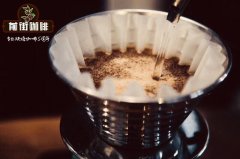How many kinds of coffee beans are there? comparative introduction of three processing methods of coffee beans

Professional coffee knowledge exchange more coffee bean information please follow the coffee workshop (Wechat official account cafe_style)
Introduction to Qianjie-Coffee treatment
1. Drying method
Drying is a traditional processing method of coffee beans, the fruits need to be dried in the natural sun after harvest, and some mechanical drying is carried out at the same time. The process is: harvest → sun field (sunlight exposure) → sheller (remove pulp, etc.) → grading (electronic bean selector or hand selection, screen, etc.) → export.
The color of raw beans treated by drying is yellow, and the water content of coffee beans is generally about 11%, 12%. The advantage is that sun beans have better sweetness and mellow thickness, and less sour taste, which many coffee fans like very much. The disadvantage is that due to the use of artificial and natural treatment methods in the process, the sun-cured beans do not look good in appearance, do not look good, the quality is unstable, and there will be greater ups and downs.
two。 Washing method
Water washing is the most popular treatment method at present, and most boutique coffee beans will choose water washing method. Washing coffee refining process: harvesting → storage tank (removal of impurities and impurities) → pulp removal machine (removal of pulp and impurities) → fermentation tank (removal of mucous membrane on endocarp) → washing pool (selection of light and hard beans) → sun drying field (or dryer) → sheller (removal of endocarp) → grading (electronic bean selector or hand selection, Screen, etc.) → exit.
The appearance of coffee beans processed by washing is neat, and the impurities and defective beans are less, and the water content of coffee beans is generally about 16%. The advantage is less miscellaneous flavor, clear taste and bright sour taste; the biggest disadvantage is that coffee beans are easy to catch sour taste in the process of fermentation.
3. Honey treatment
The honey treatment of coffee beans is to remove the peel and pulp, there will be a layer of sticky gel wrapped in the coffee endocarp, its sugar content is very high, usually called "honey". With this layer of honey, the wet coffee beans are put on the rack to dry, turn constantly to avoid pollution and mildew, and speed up the drying. this process is the honey treatment of coffee. Honey-treated coffee has low acidity because it does not undergo fermentation, showing the sweet original flavor of ripe coffee fruit and berry aroma, with the tone of red wine.
Knowledge: although coffee beans are called beans, they are actually the seeds of the fruits of Rubiaceae (coffee trees).
In short: Qianjie is a coffee research hall, happy to share the knowledge about coffee with you, we share unreservedly just to make more friends fall in love with coffee, and there will be three low-discount coffee activities every month. The reason is that Qianjie wants to make more friends drink the best coffee at the lowest price, which has been Qianjie's tenet for 6 years!
END
Important Notice :
前街咖啡 FrontStreet Coffee has moved to new addredd:
FrontStreet Coffee Address: 315,Donghua East Road,GuangZhou
Tel:020 38364473
- Prev

Coffee beans semi-washing method steps Coffee semi-washing method features an article let you understand seconds
Professional coffee knowledge exchange More coffee bean information Please pay attention to coffee workshop (Weixin Official Accounts cafe_style) Front street-Semi washing treatment process introduction Semi washing treatment method can be said to be the combination of solarization method and washing method. The idea is to use less water than washing to produce coffee that tastes cleaner than sun and thicker than washing.
- Next

What does coffee honey treatment mean? the process of coffee and soybean honey treatment is as sweet as honey.
Professional coffee knowledge exchange more coffee bean information please follow the front street of coffee workshop (Wechat official account cafe_style)-Coffee honey treatment began in Costa Rica, is a method tried by local coffee farmers to improve the quality of coffee beans, and then slowly spread to other countries. So why do Costa Rican farmers try this kind of processing?
Related
- Beginners will see the "Coffee pull flower" guide!
- What is the difference between ice blog purified milk and ordinary milk coffee?
- Why is the Philippines the largest producer of crops in Liberia?
- For coffee extraction, should the fine powder be retained?
- How does extracted espresso fill pressed powder? How much strength does it take to press the powder?
- How to make jasmine cold extract coffee? Is the jasmine + latte good?
- Will this little toy really make the coffee taste better? How does Lily Drip affect coffee extraction?
- Will the action of slapping the filter cup also affect coffee extraction?
- What's the difference between powder-to-water ratio and powder-to-liquid ratio?
- What is the Ethiopian local species? What does it have to do with Heirloom native species?

